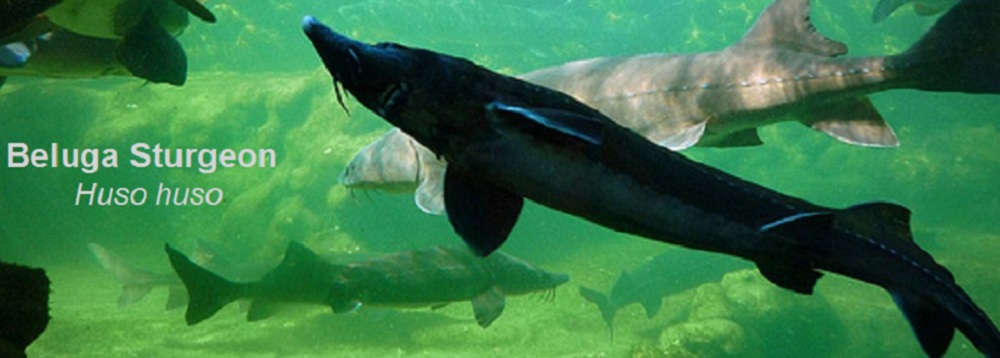Adaptation
Beluga sturgeon have a
number of adaptations that make them highly equipped to survive
in the wild. One of the most prominent adaptations is the
sturgeon's massive size. H. huso, a fish that can grow
to be 5 meters in length and weighing up to 1.5 tons, is the
largest freshwater fish on the planet. (Hudson,
2003) This large size leads the beluga sturgeon to be a
predator to many smaller fishes and allows it to truly hold its
ground against any other predator that tries to overpower the
sturgeon.
Another adaptation that allows Huso huso
to be dominant in nature is the feathered ends to the
barbels that extend of the bottom of the snout. This feathered
morphology increases the surface area that the sturgeon uses to
taste and smell. Having an increased area to sense potential
prey leaves the fish with a higher sensitivity for finding a
future meal.
An adaptation that aids in food acquisition is the color of the
beluga. The color of the beluga sturgeon is dark grey, or green dorsally
while the underside tends to be a lighter grey or white. This
color configuration allows the fish to be relatively unseen by
fish swimming above the sturgeon as well as those swimming
below. The dark color effectively blends in with the abyssal
bottom of the sea and the white or light grey blends in with the
lightened color of the surface above. This camouflage aids in
the surprise attack necessary to find a meal.
Five rows of bony scutes (or plates) act as a support sturcutre
for the sturgeon and also aid in protection. H. huso is
protected by a single row of bony scutes that span the length of
the fish dorsally, a row on each side, and two rows of bony
plates spanning the underside. (Hudson,
2003)
Even though this species has many adaptations to help them
defend and protect themselves against other natural predators,
no adaptation can keep them from the ultimate predator, humans.
No amount of defense and protection can stop the effects that
humans have on some species of wildlife. In order to learn more
about the threats posed against this prehistoric animal, and the
conservation efforts that are in place to save them, explore the
threats
page!
To return to the homepage, click here.

